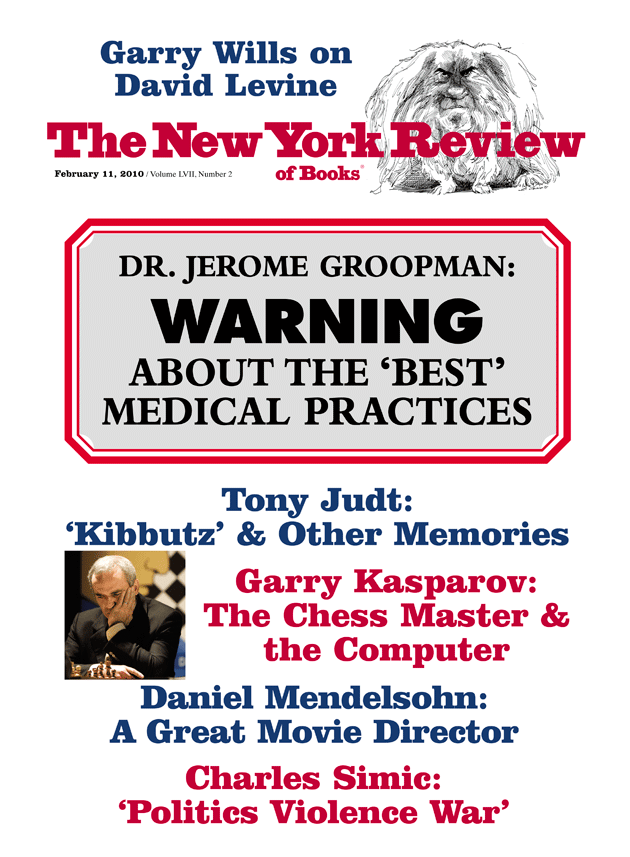In response to:
Dreams of Better Schools from the November 19, 2009 issue
To the Editors:
After Andrew Delbanco’s kind remarks about my book The Making of Americans [NYR, November 19, 2009], it is ungracious of me to challenge his passing observations rejecting a declinist interpretation of American educational history.
A decade ago when I taught in a school of education, prospective teachers were required to read a book called The Manufactured Crisis, which depicted the claim of school decline as a right-wing myth. An ideological polarity has developed over this issue. If you say that schools have declined you must be a conservative, but if you say they haven’t you must be a liberal.
The key historical data are to be found in the history of verbal scores. High verbal competence is correlative to broad general knowledge. If the anti-intellectual educational ideas taught to teachers tend to disparage academic knowledge in the early grades, then verbal proficiency will necessarily decline. And that is chiefly what happened.
On this page is a plot of mean verbal scores on the SAT from 1962 (the class of seniors who were first graders in 1950) to 1979. Just below it is a time series during the same period of combined scores on the Iowa Test of Educational Development taken by virtually all high school juniors and seniors in the state of Iowa.

As long ago as 1978, Christopher Jencks observed that the Iowa data cast doubt on the view that verbal decline was chiefly due to the increased democratization of the SAT. Other considerations tell decisively against the theme of blame-demographics-not-the-schools. The greatest democratization of SAT test takers—from 5 percent to 50 percent of seniors—occurred between 1952 and 1963. If demographics were the chief explanation of decline, then 1952–1963 would have been the period in which the greatest drop should have occurred. On the contrary, as the average SAT test taker became more diverse in class, race, and ethnicity, the scores did not fall. If ever there was a golden age of American education it was 1952–1963.
During the next period between 1962 and 1979 when scores fell, the diversity of test takers remained stable. If democratization were the chief explanation for decline in that period, the top group would continue to score well. Yet with a constant pool of about one million test takers, the absolute number of students scoring above 600 on the verbal SAT declined dramatically. As Donald Hayes and his colleagues emphasize in their important analysis, “the entire distribution of verbal scores from top to bottom shifted to lower levels.” In sum, SAT democratization is part of the explanation for verbal decline, but cannot be the principal one.
Christopher Jencks rightly stated that the decline was mainly caused by schools’ diminished emphasis on academic subject matter and their encouragement of publishers to produce dumbed-down schoolbooks, an explanation that has now been supported in detail by analyses of the language of schoolbooks.
The main historical pattern, then, is this: anti-academic ideas began to dominate teacher-training institutions in the 1930s. After 1945, as older teachers retired and new, well-indoctrinated ones began teaching, these ideas came to dominate in schools and schoolbooks. Those ideas are, at a minimum, scientifically incorrect. They have been highly injurious to social justice and the common good. That harm will be perpetuated if a selective, anti-declinist view of recent educational history continues to be the official view of liberals, of whom I count myself one. As Professor Delbanco rightly observes, the time is long overdue for abandoning easy ideological polarities in education.
E.D. Hirsch Jr.
Charlottesville, Virginia
This Issue
February 11, 2010


